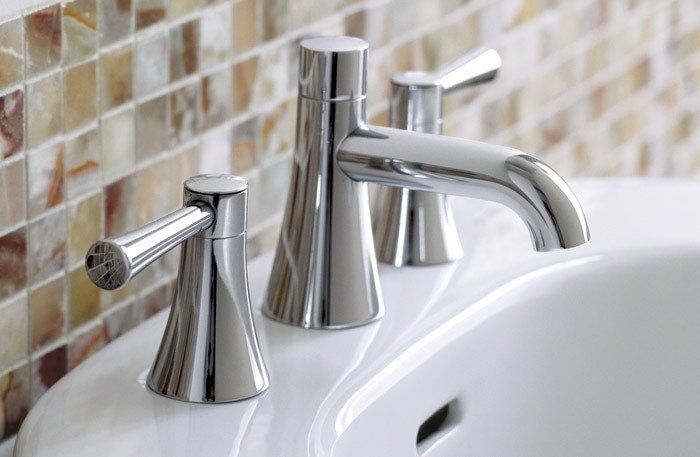Plumbing is an essential aspect of modern living that often goes unnoticed until an issue arises. From the moment we turn on the faucet to brush our teeth in the morning, to the comforting warmth of a hot shower at the end of a long day, plumbing connects us with the invaluable resource that is water. Understanding the intricacies of plumbing can be empowering and even save us from costly repairs or inconveniences. In this comprehensive guide, we will unravel the mysteries of plumbing and equip you with the knowledge to navigate this essential system within your home or workplace. Whether you are a curious homeowner or someone looking to explore a career in plumbing, this guide will provide you with the insights and tips needed to make plumbing more approachable and less mysterious. So, let’s dive in and demystify the world of plumbing together!
Understanding the Basics of Plumbing
Plumbing is an essential aspect of our day-to-day lives, providing us with clean water for various purposes and ensuring proper wastewater disposal. It involves a network of pipes, fixtures, valves, and other components that work together to deliver water and remove waste. Whether you are a homeowner or simply curious about the inner workings of your plumbing system, understanding the basics is crucial.
Water Supply System:
A fundamental aspect of plumbing is the water supply system. This system consists of pipes that bring water into our homes from a main source, such as a municipal water supply or a private well. It is important to note that there are two main types of supply systems: the direct system, where water is supplied directly to fixtures, and the indirect system, where water is first stored in a tank known as a cistern.
Fixtures and Appliances:
Plumbing wouldn’t be complete without fixtures and appliances. These include sinks, toilets, showers, bathtubs, washing machines, and dishwashers. Each fixture has its own set of pipes and connections that allow water to flow in and out. Understanding how these fixtures operate and how they connect to the overall plumbing system is essential for any plumbing enthusiast or homeowner.
Drainage and Venting:
The drainage system is responsible for removing wastewater from our homes. This system comprises of pipes that collect and transport wastewater to a sewage treatment plant or a septic tank. To ensure proper drainage, ventilation pipes are installed to release sewer gases and maintain air pressure equilibrium within the plumbing system. Proper venting is crucial in preventing backups and odors from occurring.
By grasping the basics of plumbing, you will not only gain a better understanding of how your home’s water supply and drainage systems work but also be better equipped to tackle minor issues or make informed decisions when hiring a professional plumber. Plumbing is an intricate and vital aspect of modern living, and this knowledge will undoubtedly serve you well.
Common Plumbing Issues and Solutions
Plumbing problems can occur at any time, causing inconvenience and frustration. Fortunately, many of these issues have simple solutions that can be tackled without the need for expensive repairs or professional assistance. By being aware of some of the most common plumbing problems and their solutions, you can save time, money, and unnecessary stress.
-
Leaky Faucets: One of the most prevalent plumbing issues is a leaky faucet. The constant drip-drip-drip of a faucet can be annoying, and it can also waste a significant amount of water over time. To tackle this problem, start by turning off the main water supply. Then, carefully remove the faucet handle to access the internal components. Often, a worn-out washer or a faulty O-ring is the culprit behind the leak. Replace these parts and reassemble the faucet, ensuring everything is tight and secure. Finally, turn on the water supply and check if the leak has been fixed.
-
Clogged Drains: Another common plumbing issue is a clogged drain, which can lead to slow drainage or a complete blockage. Thankfully, there are several approaches you can take to unclog a drain. Begin by using a plunger to create suction and dislodge the blockage. If that doesn’t work, try pouring boiling water down the drain to break up any grease or debris. Chemical drain cleaners can also be effective, but use them with caution and follow the instructions carefully. For stubborn clogs, using a plumbing snake or auger might be necessary to manually remove the blockage.

Running Toilets: A running toilet is not only annoyingly noisy but can also waste a significant amount of water. To fix this issue, start by removing the tank lid and inspect the inside mechanism. Often, the problem is caused by a faulty flapper valve or a misaligned float. Adjusting or replacing these components can usually solve the problem. Additionally, check for any mineral build-up or sediment that might be affecting the toilet’s proper functioning. Regularly cleaning the toilet tank can prevent future running toilet issues.
Remember, tackling these common plumbing problems yourself can save you both time and money. However, if you are unsure about any repair or if the issue persists, it’s always best to consult a professional plumber to avoid further damage to your plumbing system.
Maintaining a Healthy Plumbing System
Regular maintenance is crucial for ensuring the longevity and efficiency of your plumbing system. By following a few simple steps, you can keep your plumbing in good working order and avoid potential issues down the line.
The first step in maintaining a healthy plumbing system is to be mindful of what goes down your drains. Avoid pouring grease, oil, or coffee grounds down the kitchen sink, as these substances can accumulate and cause clogs. Additionally, using drain strainers in your sinks and showers can help prevent hair, soap residue, and other debris from entering the pipes.
Another important aspect of plumbing maintenance is checking for any leaks. Even a small, slow leak can lead to significant water wastage and damage over time. Regularly inspect the faucets, showerheads, and toilet tanks in your home for any signs of leaks, such as water stains or dripping sounds. If you notice a leak, address it promptly to prevent further problems.
Maintaining proper water pressure is also essential for a healthy plumbing system. High water pressure can strain pipes and fixtures, leading to leaks or bursts. Consider installing a pressure regulator to ensure the water pressure remains within the recommended range. Additionally, avoid using excessive force when shutting off taps, as this can cause damage to the internal components.
Lastly, don’t underestimate the importance of regular plumbing inspections. Hiring a professional plumber to conduct routine checks can help identify any potential issues before they escalate into major problems. A plumber can assess the overall condition of your plumbing system, check for hidden leaks, and provide necessary repairs or maintenance.
By adopting these practices, you can help maintain a healthy plumbing system that functions optimally for years to come. Remember, prevention and regular maintenance are key to avoiding costly repairs and preserving the integrity of your plumbing infrastructure.




